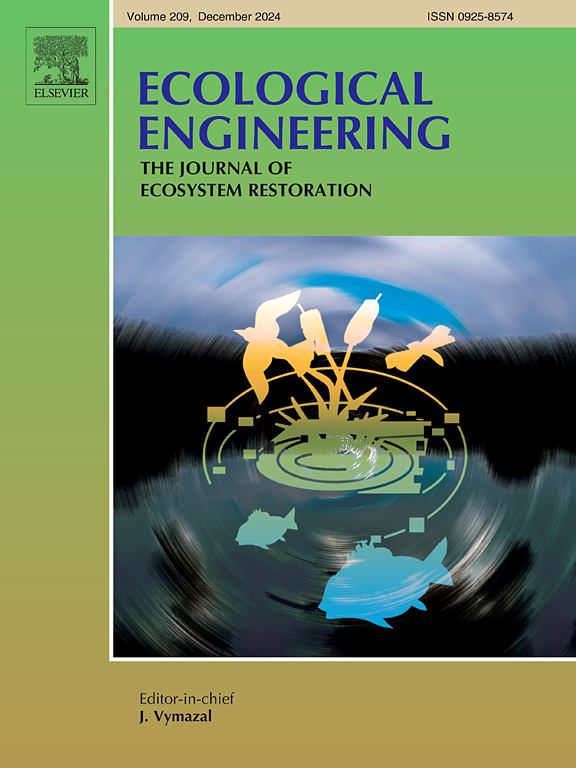Deflecting danger: The role of screen angles in fish impingement
IF 3.9
2区 环境科学与生态学
Q1 ECOLOGY
引用次数: 0
Abstract
Water abstractions in inland watercourses have the potential to harm European eel populations (Anguilla anguilla) if they are not correctly protected, potentially contributing to further declines of this critically endangered species. Current guidance aim to prevent eel impingement and entrainment at intakes and outfalls by specifying mitigation screening techniques such as screen types, screen apertures, and maximum approach velocities to the screens. These aim to prevent eels from being injured and allow them to bypass the abstraction, but they have yet to be empirically tested. In this study, screens with 3 mm apertures of horizontal and vertical wedge-wire and a Hydrolox screen were evaluated under the current Environment Agency's screening guidance document that supports the Eels (England and Wales) Regulations 2009. We measured the hydrodynamics of the screens and then observed eel behaviour and swimming dynamics upstream of the screens. The screens had minor effects on the upstream flow fields and produced suitable velocities and turbulence levels for eel escapement. At the regulation velocities, no eels impinged on the screens, validating the current guidance but impingement started to occur at higher velocities, so the guidance velocities should not be exceeded. Screens at smaller angles to the flow caused few eel impingements and therefore are preferable. The current screen guidance for 3 mm wedge-wire screens are appropriate for eels of the size tested in this study and do not cause impingement or entrainment.

求助全文
约1分钟内获得全文
求助全文
来源期刊

Ecological Engineering
环境科学-工程:环境
CiteScore
8.00
自引率
5.30%
发文量
293
审稿时长
57 days
期刊介绍:
Ecological engineering has been defined as the design of ecosystems for the mutual benefit of humans and nature. The journal is meant for ecologists who, because of their research interests or occupation, are involved in designing, monitoring, or restoring ecosystems, and can serve as a bridge between ecologists and engineers.
Specific topics covered in the journal include: habitat reconstruction; ecotechnology; synthetic ecology; bioengineering; restoration ecology; ecology conservation; ecosystem rehabilitation; stream and river restoration; reclamation ecology; non-renewable resource conservation. Descriptions of specific applications of ecological engineering are acceptable only when situated within context of adding novelty to current research and emphasizing ecosystem restoration. We do not accept purely descriptive reports on ecosystem structures (such as vegetation surveys), purely physical assessment of materials that can be used for ecological restoration, small-model studies carried out in the laboratory or greenhouse with artificial (waste)water or crop studies, or case studies on conventional wastewater treatment and eutrophication that do not offer an ecosystem restoration approach within the paper.
 求助内容:
求助内容: 应助结果提醒方式:
应助结果提醒方式:


